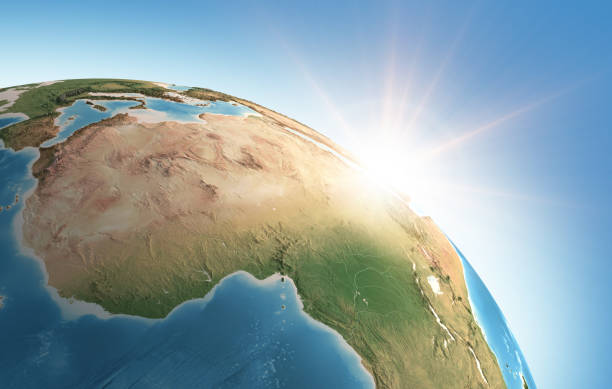
First, I think it is important for me to start with the fact that Africa is a continent, not a country. I realise this may seem arrogant but with the number of people who still believe that Africa is a country, I simply have to clarify. To those people, a drought in Sudan equals a drought across Africa, and political instability in Libya has the same effect. Africa is a continent made up of 54 countries.
Africa stands out among the world’s seven continents as a distinct entity. It has a diverse cultural legacy, abundant natural resources, and spectacular tourism sites.
Interesting facts about Africa
Its name
Scholars are divided on the origin of the name “Africa.” The majority of people believe it comes from Phoenicians, Greeks, and Roman terms. The Egyptian word Afru-ika, which means “Motherland,” the Greek word aphrike, which means “without cold,” and the Latin word aprica, which means “sunny,” are important words.
Its size

Africa is the world’s second-largest continent (after Asia), covering roughly one-fifth of the planet’s total land area. The Atlantic Ocean borders the continent on the west, the Mediterranean Sea on the north, the Red Sea and the Indian Ocean on the east, and the mingling waters of the Atlantic and Indian seas on the south.
Despite being the world’s second-largest continent, Africa boasts the world’s smallest coastline. Because there are few inlets and major bays or gulfs, Africa’s coastline is 18,950 miles (30,500 km) long.
Its islands
A number of islands off the coastlines of Africa are linked to the continent. Madagascar, one of the world’s largest islands, is the most significant of these. To the east, Seychelles, Socotra, and other islands; to the southeast, Comoros, Mauritius, Réunion, and other islands; to the southwest, Ascension, St. Helena, and Tristan da Cunha; to the west, Cape Verde, the Bijagós Islands, Bioko, and S. Tomé and Principe; and to the northwest, the Azores, Madeira, and the Canary Islands.
Its climate
The sunny climate of Africa is influenced by a variety of variables. The Equator almost completely divides the continent into two equal halves. As if it were a mirror, climatic zones sit on either side of this line, with tropical wet climates closer to the Equator and more arid climates closer to the tropics. The asymmetrical form of Africa, however, disrupts this climatic harmony. Oceanic influences have a significantly greater impact on the continent’s compact southern section than on the swelling northern section. The northern part of Africa is drier and hotter, whereas the southern half is damp and cool.
Its Agriculture
Climate change has a significant impact on Africa’s agriculture, which is the continent’s single most important economic sector. Agriculture employs two-thirds of the continent’s workforce and accounts for 20 to 60% of each country’s gross domestic product (GDP). The total worth of goods and services generated in a country in a given year is referred to as GDP.
Tropical wet, savanna, desert, Mediterranean, and highland climatic zones are important agricultural climatic regions.
The Equator, the Gulf of Guinea, and the east Madagascar coast all have tropical wet conditions. Plantains, pineapples, coffee, cocoa, and oil palms are all important crops in Africa’s tropical wet regions.
Much of eastern and southern Africa is covered with savannas. Temperatures are cooler and more variable here than they are in tropical wetland areas. In the savanna, the dry season can extend up to six months. Cassava, peanuts, peppers, okra, eggplant, cucumber, and watermelon are all important savanna crops. Millet and sorghum, two of Africa’s most important grain crops, are grown here.
Desert conditions can be found throughout northern Africa, particularly in the Sahara and Sahel. On the hottest days, temperatures can reach 54 degrees Celsius (130 degrees Fahrenheit) and drop below freezing on the coldest nights. For years, some areas go without rain. Date palms and cotton are important desert crops.
The Mediterranean climate can be found along Africa’s northern and southern coasts. The climate in these areas is pleasant, with dry summers and somewhat rainy winters. Figs, olives, oranges, tomatoes, onions, and big vegetables like cabbage and cauliflower are all important crops.
Highland conditions can be found in Africa’s highest elevations, particularly in Ethiopia’s Highlands. The climate here is significantly colder than that of the neighbouring plains. Alfalfa, potatoes, and wheat are all important highland crops.
its mineral resources
Africa is a significant producer of valuable metals and minerals. African countries export uranium, which is used to make nuclear power; platinum, which is used in jewellery and industrial applications; nickel, which is used in stainless steel, magnets, coins, and rechargeable batteries; bauxite, which is a major aluminium ore; and cobalt, which is used in colour pigments.
Innovative Tech Solutions, Tailored for You
Our leading tech firm crafts custom software, web & mobile apps, designed with your unique needs in mind. Elevate your business with cutting-edge solutions no one else can offer.
Start Now
Gold and diamonds are Africa’s two most profitable mineral resources. Africa produces a considerable portion of the world’s total gold production. Almost half of Africa’s gold is produced in South Africa. Other important gold producers are Ghana, Guinea, Mali, and Tanzania.
Africa has produced almost 75% of the world’s diamonds in terms of value. Africa’s top diamond producers include Botswana, Angola, South Africa, the Democratic Republic of the Congo, and Namibia. Unfortunately, the diamond industry has sparked and sponsored countless African conflicts and civil wars. Conflict diamonds or blood diamonds are diamonds that originate in certain areas.
Africa has a few oils and natural gas resources that are drilled for energy and fuel. Nigeria, Libya, Algeria, Egypt, and Angola own the majority of Africa’s oil reserves. On the continent, oil exploration has increased substantially, and many countries are attempting to become first-time producers.
Its tourist attractions
As of May 2021, 1.04 million foreign tourists visited Africa, making Africa the second-fastest expanding tourism region behind Asia Pacific.
Positive legislative improvements, together with greater investments in the sector, are now enjoying the rewards of making Africa a more appealing tourist destination.
Below are some of the most popular tourist attractions in the continent:
1. Zanzibar, Tanzania
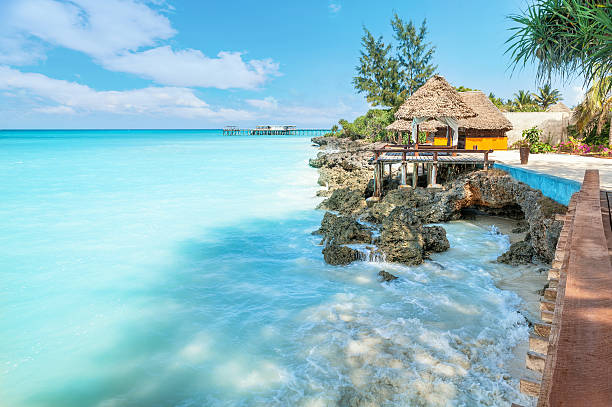
An fascinating archipelago with lovely beaches and warm waters lies just off the shore. This wonderful area is one of Africa’s most popular tourist attractions since, for some, it is the ideal setting for a relaxed beach vacation.
The destination offers a fascinating blend of Arabic, Middle Eastern, Moorish, and Indian cultures and customs, making it distinct like no other location in Africa. It has a colourful history reaching back to the 17th century.
2. Mount Kilimanjaro, Tanzania
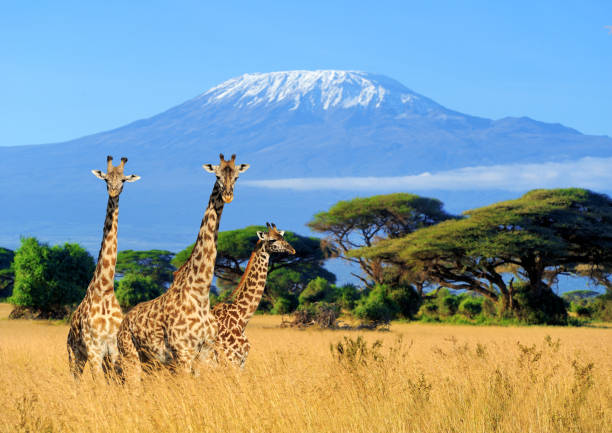
Many climbers consider it to be a major tourism destination in Africa. A trip to the summit of Mount Kilimanjaro is possibly the pinnacle of an adventure vacation for people seeking excitement. It takes 5 to 10 days to climb and return to the foot of Africa’s tallest mountain, which stands at 5,895 metres. The climb does not necessitate any specific climbing equipment, but it does necessitate a certain amount of fitness. Altitude sickness is a common concern among those who undertake the climb, so be prepared.
3. Giza Necropolis, Egypt
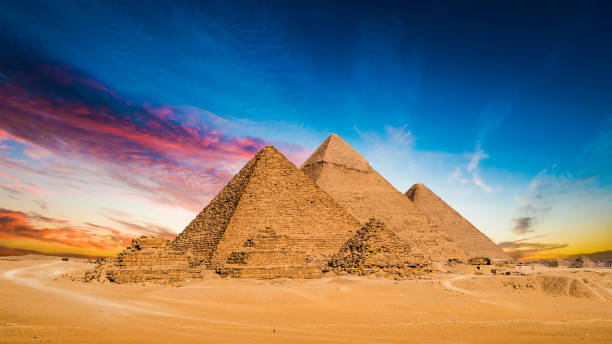
Many people do not consider Egypt to be in Africa. It is, however, and the Giza Necropolis must be on many people’s trip bucket lists. Pyramids and tombs along the Nile River bring the ancient Egyptian civilizations back to life. Not the Africa that most people envision, but surely a portion of Africa that everyone should see.
4. Okavango Delta, Botswana
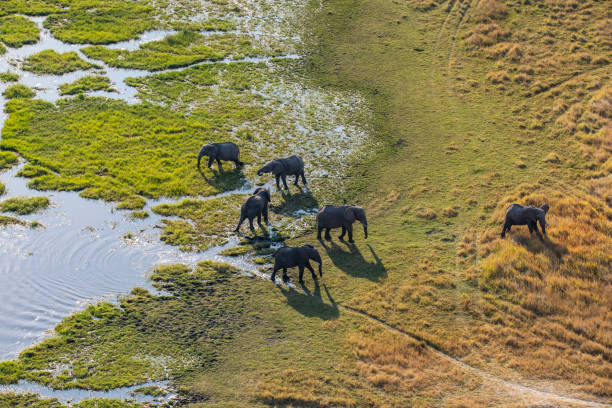
The Okavango Delta, a UNESCO world heritage site and one of Africa’s top tourist destinations, is one of the most beautiful places on the planet. Thousands of people visit this large river delta at the foot of the massive Kalahari each year to experience Africa’s real grandeur and wildness.
Many tourists visit the wild animal hotspot by air, either in a light plane or a hot air balloon, and the sights are breathtaking. Land-based safaris provide some of the best game-viewing opportunities anywhere in the world, and many visitors only wish they could stay longer in this incredible location.
There are so many great tourist locations in Africa, and each country, region, and town has its own hidden jewels. In Africa, there is a lot to see. It would be tough to cover everything in one location.
Before You Go…
Hey, thank you for reading this blog to the end. I hope it was helpful. Let me tell you a little bit about Nicholas Idoko Technologies. We help businesses and companies build an online presence by developing web, mobile, desktop, and blockchain applications.
We also help aspiring software developers and programmers learn the skills they need to have a successful career. Take your first step to becoming a programming boss by joining our Learn To Code academy today!
Be sure to contact us if you need more information or have any questions! We are readily available.











